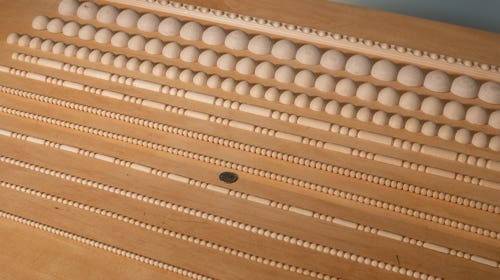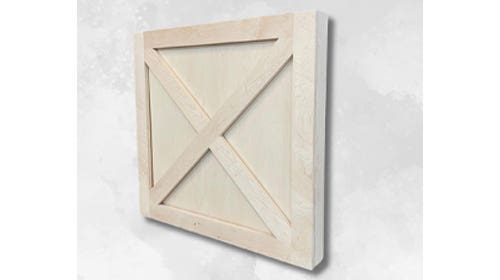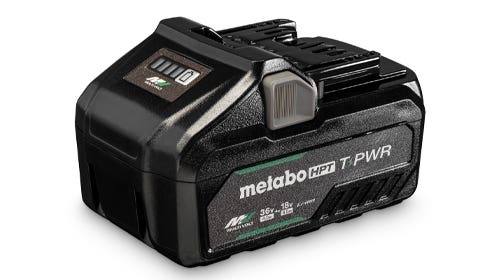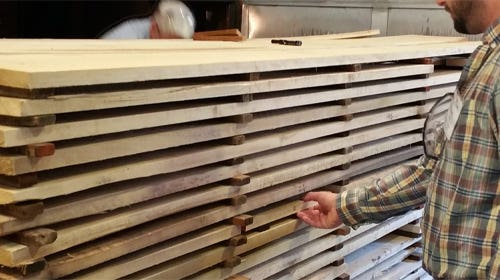Lettrrs to the Editor: The challenge for manufacturers
I have been keeping up with the story of the Ryobi table saw lawsuit. After reading Ian Kirby’s opinion piece in the April issue, I feel like I might as…
I have been keeping up with the story of the Ryobi table saw lawsuit. After reading Ian Kirby's opinion piece in the April issue, I feel like I might as well wade into the debate. With every opinion letter and article that comes out on the subject, we're getting closer and closer to the truth.
First, I would like to commend [SawStop president] Mr. [Steve] Gass for his wonderful invention. The shop at which I used to be employed now has a SawStop machine; too bad it wasn't available when my cousin lost parts of two fingers to a table saw-mounted fluting cutter. A safety device that actually works and works well is a rarity on machinery for the casual woodworking industry. I say casual because I am talking about the usual suspects here: Delta, Powermatic, Jet, Ryobi, et al. - machines that you are just as likely to find in a home shop as in an industrial pro shop. Mr. Kirby grazed the truth with his comment about the Biesemeyer fence. Bill Biesemeyer got fed up with a poorly designed commercial fence so he made his own. Look at the industry today. Nearly all of the saw manufacturers have a knockoff, if not an actual copy of his fence. We all know why: It works and it works well.
From my experience, the manufacturers of American-style table saws have not had the same kick-in-the-pants moment with the splitter/guard designs that they have had with the rip fence design. (I have not seen the new Unisaw setup, although I've read it is a big improvement.) The European saw manufacturers do a lot better job by using overarm guards with a separate riving knife that raises and lowers with the blade. Yes, I know we have those over here, too, but they are very expensive either as an OEM option or an aftermarket add-on.
Now we come to the crux of the matter: American woodworkers remove the guard or never install it in the first place because it is so poorly designed and is actually a greater safety hazard than taking a calculated risk. Using the riving knife as the mounting bracket for the guard severely limits the types of cuts that can be made. For instance, the guard/splitter must be removed to make dado cuts. Incidentally, making a dado cut on sheet goods is where you really need some type of guard. In addition, the anti-kickback fingers are not only unnecessary, they can damage the wood as it passes through the blade and also bind up when cutting narrow stock.
Now, I have had my share of accidents while using machinery. I still have all 10 of my fingers, scarred though they may be. The only time I was ever injured while using a piece of machinery was because I did something stupid or did not have the piece properly clamped and secured. I also like my machinery to be properly guarded. I have seen guards removed or never installed on table saws and miter saws with the guards circumvented. Back in the 1980s, a lot of manufacturers didn't have guards that worked very well on their saws. Once they figured out how to make the guard retract smoothly when the saw head was dropped, the real safety level came up.
I've read about how Mr. Gass shopped his product to the major saw manufacturers and how they turned him down. I believe that's why he started his own line of higher quality saws. But if the real issue is safety, then why doesn't he build a SawStop retrofit kit to fit all the existing saws out there? I would be interested in such a device. The problem is that most of us can't afford to simply mothball a saw just so we can buy a SawStop. We'll use a stock feeder or, like Ian Kirby suggested, push sticks.
Is anyone out there up to the job of building a better guarding system that is relatively inexpensive, easy to use, safe and something that will be emulated by the main players in the American table saw game?
Alan Blough
Sardis, Ohio
Shock and sadness
I was shocked to learn in the April issue of senior writer Brian Caldwell's passing. I first met Brian at the Philadelphia Furniture Show when it was downtown at the convention center. I was a new chairmaker and exhibitor. He stopped by my simple display and talked about what I was doing. He graciously mentioned me and my work in his article about the show.
Later, he stopped by my booth at the Fine Furnishings Show in Providence, R.I., always remembering me and being honestly interested in how my business was doing. After a few years, we reconnected on LinkedIn. He then called in January to talk about an article. He really remembered our meeting in Philadelphia and related his thoughts about this 'poor' guy out of Tennessee that wasn't going to make it because my booth was so simple.
I have been at this business for 13 years now. I'm glad to have known Brian, even only briefly. I always looked for his byline and will miss his work.
Walter Turpening
Kingsport, Tenn.
When I saw the news about Brian, my heart sank. I did a double take, rubbed my eyes to make sure I was reading it correctly and was so sad to see that it was really right there in black and white. It took the wind right out of my sails.
I appreciate how fragile life is, but it sure reiterates it when a friend passes away. Brian was such a neat guy, gentlemanly, mild-mannered, well-spoken and articulate, and showed genuine interest in seemingly everything. The world was a better place having had Brian in it.
I'm sorry for your loss, and mine, as well as everyone whom he touched.
Ben Barrett
Great Barrington, Mass.
Though I never met Brian Caldwell, like hundreds of readers I came to know him through his articles, through A.J. Hamler's blog and now through your heartfelt tribute in the April issue. Whereas many have lost a loyal friend, confidant and trusted business associate, I have lost a fellow writer and a mentor whose profiles I read word for word and consciously used as a template for my own articles.
Ann Goebel
Knightdale, N.C.
This article originally appeared in the May 2011 issue.







